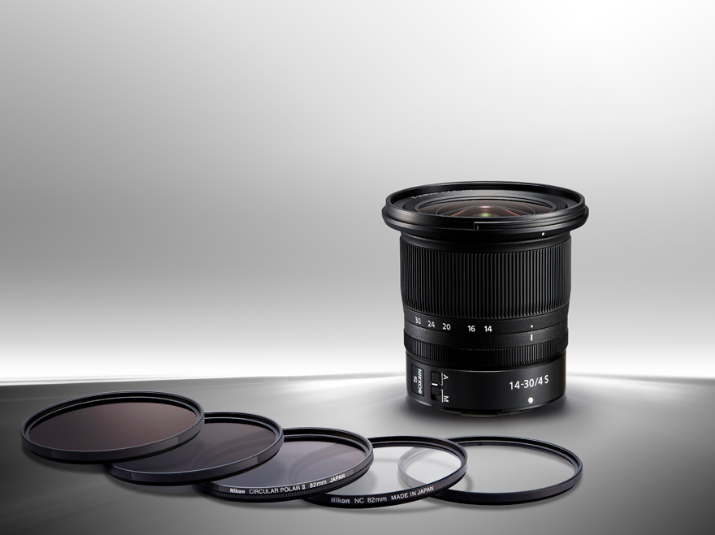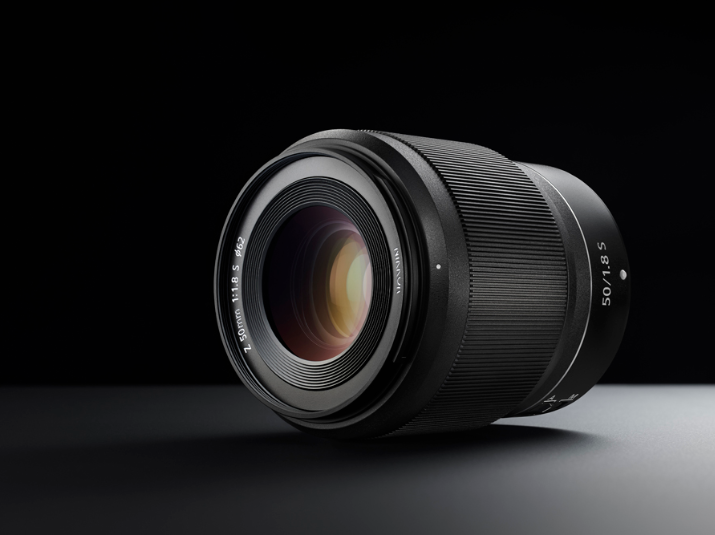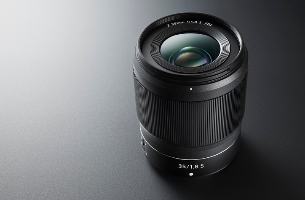Nikon School have been putting the new mirrorless Z 7 and Z 6 cameras and Z-mount lenses through their paces, and here training Manager Neil Freeman explains what this completely new direction in lens design means for your imaging.
Nikon School have been putting the new mirrorless Z 7 and Z 6 cameras and Z-mount lenses through their paces, and here training Manager Neil Freeman explains what this completely new direction in lens design means for your imaging.
Nikon School have been putting the new mirrorless Z 7 and Z 6 cameras and Z-mount lenses through their paces, and here training Manager Neil Freeman explains what this completely new direction in lens design means for your imaging.

The essential nature of the bayonet F-mount hasn’t changed since it was introduced in 1959, making Nikon one of the only manufacturers to have had just one DSLR mount. Now we’ve developed a second system – the Z-mount, for our new mirrorless Z-series cameras . Utilising the world’s widest full-frame lens mount (55mm compared to 44mm on the F-mount), this literally opens up a whole new world of light for you to play with.
Coupled with the Z-series’ significantly smaller flange distance (the depth between the sensor and the back of the lens), a mere 16mm compared to 46.5mm with F-mount DSLRs, this has enabled us to develop full-frame Z-mount lenses that are lightweight and exceptionally compact, making them far easier to travel with and more comfortable to use. It’s also freed us up to experiment with new, state-of-the-art optics and coatings, to make these lenses even sharper than our F-mount Nikkors, which is saying something…
All the new Z lenses released so far are designated “S-Line”, indicating a new benchmark in optical performance. They are all fully weather-sealed with metal-backed connections onto the metal Z-mount – no plastic connections here! Optical-enhancement coatings include Nano Crystal and the new Arneo coating to significantly reduce flare, ghosting, coma, chromatic, axial and spherical aberration are all greatly minimised as well. This makes it easier to shoot into the sun, while a fluorine coat on the lenses’ front surface actively repels water, dirt and dust. Another benefit of the wider bayonet design is much straighter light paths, so edge-to-edge sharpness is incredible – consistently outperforming our already superb F-mount glass.
The new lenses also have a customisable control ring which can be used for manual focusing (default), aperture control (great for iris transitions during video recording) or exposure compensation. A newly designed ultra-quiet Stepping Motor powers faster, quieter autofocusing and aperture control than before.
We’ve been testing the 14-30mm f/4 S and 24-70mm f/4 S in all sorts of conditions and their performance has been consistently excellent. Both have a locking zoom, enabling them to retract when not in use; to use, you turn them to extend fully and lock into place. It’s a very interesting design that works really well and has enabled us to make them smaller and more compact.

With the optional Mount Adapter FTZ, Z-series cameras are fully compatible with over 90 F-mount Nikkor lenses, which retain all their sharpness, rendering power and functionality. Plus, they gain so much, including silent shooting and in-camera VR (see below). In total, approximately 360 F-Mount Nikkor lenses can be used. The FTZ works seamlessly – there’s no glass in it, it’s just an adapter with electronic contacts to pass information between the F-lens contacts and those on the Z series. We’ve tested it with everything up to the 600mm and there’s no loss of performance – focus is just as fast and images are just as sharp.
One of the huge benefits of the Z-series cameras is their image stabilisation system, built into the sensor. if you attach an F-series, non-VR lens via the FTZ, you now have a lens that can benefit from the camera’s inbuilt stabilisation – it’s now essentially a lens with VR capability, which you can handhold down to very low shutter speeds. Another plus-point is that the in-body stabilisation is actually better than the VR systems on the F-mount lenses.

NIKKOR Z 35mm f/1.8 S – out now
Nikon School verdict: “Great for close-up portraiture and street photography, and can also be used for landscapes. Image quality is better than any of its F-mount f/1.4 prime predecessors.”
· Arneo and fluorine coats
· 0.25mm minimum focus
· 62mm filter thread
· 370g
NIKKOR Z 50mm f/1.8 S – out now
Nikon School verdict: “Perfect for portraiture and street photography, this is probably one of the sharpest lenses we’ve ever made. It’s just incredible, up there with our 105mm f/1.4 E-series F-mount portrait lens and the 200mm f/2, which are both regarded as classic and incredibly sharp portrait lenses. It’s also extremely compact.”
· Arneo and fluorine coats
· 0.4mm minimum focus
· 62mm filter thread
· 415g
NIKKOR Z 24-70mm f/4 S – out now
Nikon School verdict: “Very sharp and very versatile, and although it’s f/4 it performs almost like the older F-mount f/2.8. It’s also much, much smaller and lighter than existing zooms.”
· Arneo, Nano Crystal and fluorine coats
· 0.3mm minimum focus
· 72mm filter thread
· 500g
NIKKOR Z 14-30mm f/4 S – on sale April 2019
Nikon School verdict: “Significantly lighter and smaller than the F-mount 14-24mm f/2.8. It’s great for close-up portraiture, street photography and landscapes. Image quality is better than any of its F-mount f/2.8 prime predecessors. Another key point is that it’s the world’s first full-frame ultra-wideangle lens with an 82mm flat-front thread, which means you can use lightweight, standard screw-in and 100mm drop-in filters – no need for a bespoke, heavy filter kit and bulky filter holder.”
· Nano Crystal and fluorine coats
· 0.28mm minimum focus
· 82mm filter thread
· 485g
NIKKOR Z 24-70mm f/2.8 S – coming soon!
This will be our first f/2.8 Z pro lens and we’ll be reporting on our tests shortly, so watch this space!
· Arneo, Nano Crystal and fluorine coats
· 0.38mm minimum focus
· 82mm filter thread
· 805g
A road map of lenses already available and scheduled up to 2020 underlines Nikon’s commitment to the new Z system. By the end of 2019 there will be a total of nine S-Line lenses available, including a 24mm f/1.8, 85mm f/1.8, 70-200 f/2.8 and the flagship 58mm f/0.95 S Noct – the fastest Nikkor lens in Nikon history. A 20mm f/1.8, 50mm f/1.2 and 14-24mm f/2.8 are already lined up for 2020, with more to be revealed for 2020 and 2021.

We love these lenses. They are exceptional – so sharp, so light and handle really well. I’ve retired my D850 with honours and I’m now shooting exclusively on the Z 7, with the Z 6 as a back-up. Instead of one D850 and two lenses, I can now fit the Z 7, Z 6 and four lenses – 14-30mm f/3 S, 24-70mm f/4 S, 50mm f/1.8 S, plus my AF-P 70-300mm f/4.5-5.6E ED VR and the FTZ Mount Adapter – all in one smallish, compact, light kitbag.
· Want to find out more about the Z series? Book onto our new five-star course, Getting Started With The Nikon Z Series
With the Z 7 ’s high resolution and these exceptional lenses especially the 14-30 f/4 , shooting at f/8 seems to be the sweet spot to get the best out the lens – above that, you can see diffraction creeping in.
You can now download a PDF version of this Hints & Tips article to read offline and print